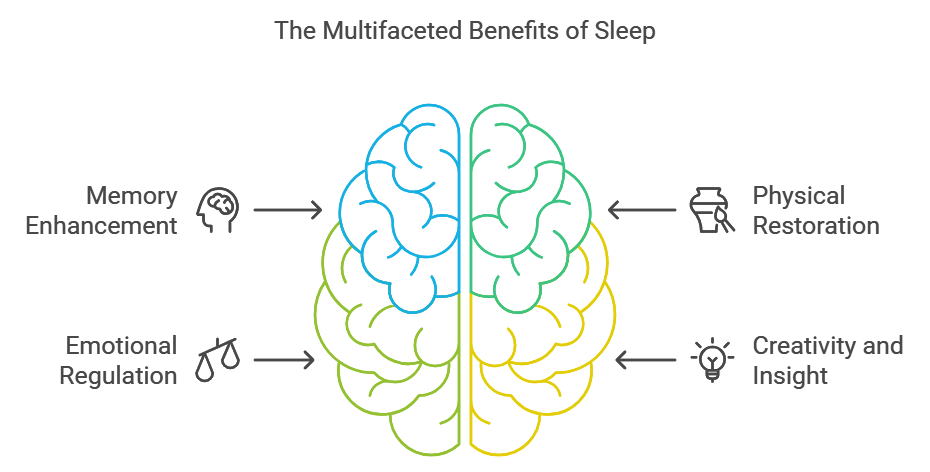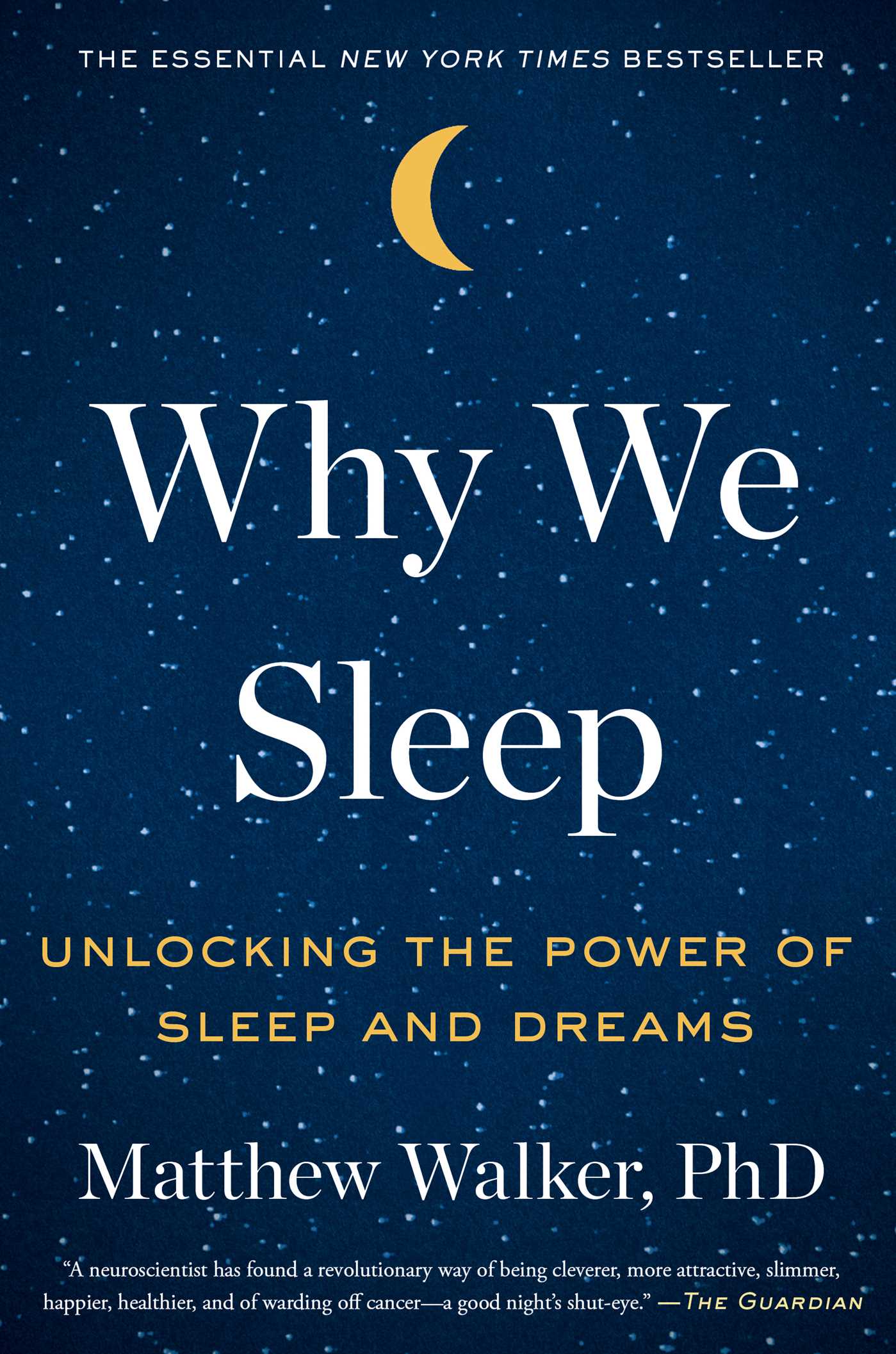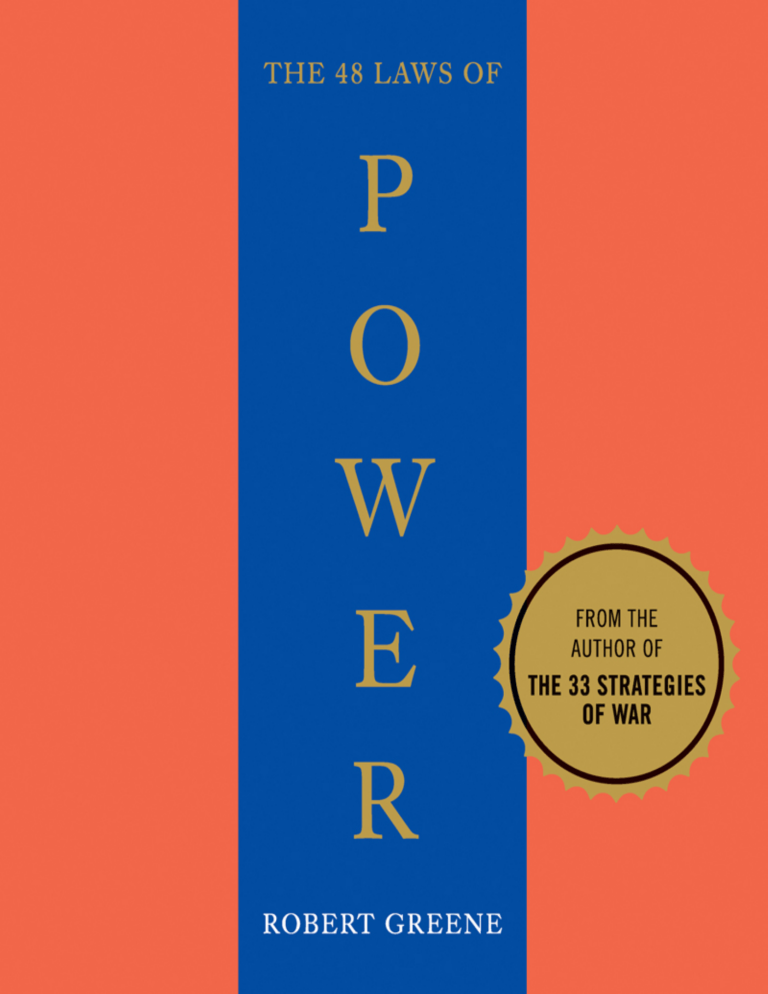Table of Contents
In Why We Sleep book summary, the Smart Owl explores the crucial role of sleep for human health and well-being, from Matthew Walker’s book, “Why We Sleep: Unlocking the Power of Sleep and Dreams.”
The Two Pillars of Sleep: NREM and REM

The book emphasizes the distinct functions of the two main stages of sleep: Non-Rapid Eye Movement (NREM) sleep and Rapid Eye Movement (REM) sleep. These stages cycle throughout the night, each contributing uniquely to brain health and overall well-being.
NREM sleep, particularly the deep stages, is characterized by slow brainwaves and is essential for memory consolidation, physical restoration, and clearing metabolic waste from the brain. Think of deep NREM sleep as a meticulous housekeeper, tidying up the brain’s neural connections and removing the day’s accumulated debris.
REM sleep, on the other hand, is marked by rapid eye movements and vivid dreams. It plays a crucial role in emotional processing, creativity, and problem-solving. Imagine REM sleep as a creative playground, where the brain freely explores and connects seemingly disparate pieces of information, fostering novel insights and emotional regulation.
The Brain on Sleep: A Symphony of Restoration and Enhancement
The book highlights several key benefits of sleep, particularly focusing on the distinct roles of deep NREM and REM sleep in these processes:

- Memory Enhancement: Deep NREM sleep is crucial for consolidating newly learned information, transferring it from the short-term storage of the hippocampus to the long-term storage of the cortex. This process strengthens memories and protects them from being forgotten. Think of it like moving files from your computer’s RAM to the hard drive for permanent storage. REM sleep, with its unique ability to blend and associate memories, further enhances learning by extracting overarching rules and commonalities from disparate pieces of information.
- Physical Restoration: Deep NREM sleep is a time for cellular repair and rejuvenation. It promotes tissue growth and muscle repair, strengthens the immune system, and regulates hormone levels. During this stage, heart rate and blood pressure decrease, giving the cardiovascular system a much-needed break.
- Emotional Regulation: REM sleep is essential for processing and regulating emotions. It helps us make sense of our experiences, learn from them, and adapt to challenges. This emotional recalibration during REM sleep contributes to greater emotional stability, resilience, and social intelligence.
- Creativity and Insight: REM sleep, with its dream-filled landscape, fosters creative thinking and problem-solving. By forging unexpected connections between seemingly unrelated information, REM sleep can spark novel insights and solutions that elude our waking minds. This is why “sleeping on a problem” often leads to breakthroughs.
The Cost of Sleep Deprivation: A Steep Price to Pay
The book consistently warns against the detrimental effects of chronic sleep deprivation, emphasizing that the human mind is a poor judge of its own sleep needs. This inability to accurately assess sleep deprivation can lead individuals to dangerously underestimate the severity of their sleep debt.
The book details the far-reaching consequences of chronic sleep loss:
- Cognitive Decline: Sleep deprivation impairs attention, concentration, decision-making, and reaction time. It also weakens working memory, making it harder to hold information in mind and manipulate it. This can lead to decreased productivity, increased errors, and a higher risk of accidents.
- Emotional Instability: Sleep deprivation disrupts emotional regulation, leading to increased irritability, anxiety, and depression. It also amplifies negative emotional responses, making us more reactive to stress and less able to cope with challenges.
- Weakened Immune System: Chronic sleep loss weakens the immune system, increasing susceptibility to infections and reducing the effectiveness of vaccines.
- Increased Risk of Disease: Sleep deprivation significantly increases the risk of developing various chronic diseases, including cardiovascular disease, stroke, type 2 diabetes, obesity, and certain types of cancer.
- Premature Aging: Chronic sleep loss accelerates the aging process, impacting both physical and cognitive health.
Addressing the Sleep Crisis: A Call to Action
The book emphasizes the urgent need to address the global sleep deficit, proposing a multi-pronged approach:
- Individual Responsibility: Adopting healthy sleep habits is crucial. This includes prioritizing a consistent sleep schedule, creating a relaxing bedtime routine, and minimizing exposure to electronic devices before bed.
- Education and Awareness: Raising public awareness about the importance of sleep and the dangers of sleep deprivation is essential. Educational programs in schools and workplaces can empower individuals to make informed choices about their sleep.
- Workplace Policies: Employers can promote a sleep-positive culture by encouraging employees to take breaks, offering flexible work schedules, and providing napping facilities.
- Policy Changes: Policymakers can implement changes that prioritize sleep health. This could include adjusting school start times, regulating work hours, and reducing light pollution at night.
- Technological Solutions: Technology can play a role in promoting healthy sleep. This includes developing devices that filter blue light, track sleep patterns, and provide personalized sleep recommendations.
Conclusion
By embracing sleep as a fundamental pillar of health and well-being, we can create a sleep-positive society that values rest and recognizes the profound benefits of a well-rested mind and body.
Who Should Read “Why We Sleep”?
- The General Public: The book aims to address the lack of public awareness about the importance of sleep and the dangers of sleep deprivation. It explores the benefits of sleep for both the brain and body, highlighting its role as a crucial component of health and well-being.
The book is written in an accessible and engaging style, making it suitable for a wide audience.
- Parents: The book provides insights into the sleep patterns of infants, children, and adolescents. It discusses the development of the circadian rhythm in children and explains the reasons behind their polyphasic sleep patterns. It also addresses the challenges parents face due to their children’s sleep habits.
- Students: The book emphasizes the importance of sleep for learning and memory. It explains how sleep deprivation negatively affects academic performance and provides insights into the relationship between sleep and memory consolidation.
- Individuals with Sleep Problems: The book discusses various sleep disorders, including insomnia, narcolepsy, and fatal familial insomnia. It provides information on the causes and symptoms of these disorders and offers advice on seeking treatment and improving sleep hygiene.
- Professionals in High-Risk Occupations: The book highlights the dangers of sleep deprivation in professions that require high levels of alertness and decision-making, such as law enforcement, military personnel, doctors, nurses, and emergency service workers. It emphasizes the need for adequate sleep in these fields to ensure safety and optimal performance.
- Business Leaders and Policy Makers: The book presents the economic and societal costs of sleep deprivation. It discusses the impact of insufficient sleep on productivity, health care expenses, and overall well-being. The book advocates for policy changes and workplace adjustments to prioritize sleep and promote a healthier society.
The book also includes practical tips for improving sleep hygiene, such as maintaining a consistent sleep schedule, creating a conducive sleep environment, and avoiding caffeine and alcohol before bed.
It encourages readers to prioritize sleep as a fundamental aspect of their health and well-being.

Liked Why We Sleep book summary? Read other book summaries here
You may also enjoy:








Leave a Reply